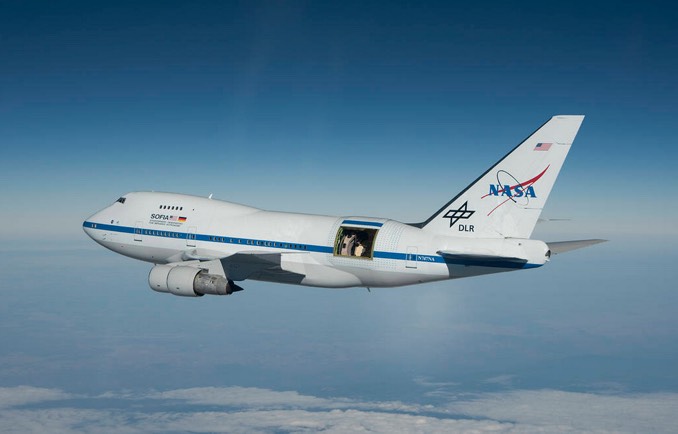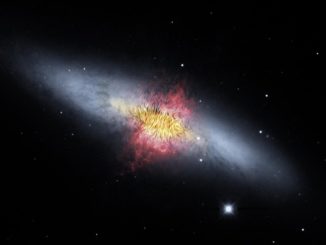
For the first time, an unambiguous signature of water molecules has been spotted on the Moon, and not just in ultra-cold permanently shadowed polar craters. The airborne Stratospheric Observatory for Infrared Astronomy (SOFIA), operated by NASA and the German space agency, spotted H2O over sunlit regions of the Moon, indicating the valuable resource may be more readily available to future astronauts than previously believed.
A paper in the journal Nature Astronomy outlines recent infrared observations that show clear spectral signatures of water molecules across the vicinity of Clavius crater. Researchers theorise the water that could be locked in small glass beads formed by micrometeorite impacts or more widely mixed in with lunar soil, the result of chemical reactions triggered by the solar wind.
A second paper concludes more than 15,000 square miles of the Moon’s surface could have the capacity to maintain deposits of water ice, presumably locked up in so-called “cold traps.” The authors concluded small-scale deposits are hundreds to thousands of times more common than large reservoirs.
While the amount of water detected by SOFIA is relatively small, the discovery will add more scientific justification for NASA plans to launch rovers and astronauts to the Moon under the agency’s Artemis programme, which aims established a sustained human presence on the Moon before eventual flights to Mars.
The first piloted Artemis mission in 2024 is targeted for the Moon’s south polar region, in large part because of earlier observations indicating the presence of ice in permanently shadowed polar craters. But those conclusions were based on spectral signatures that did not directly confirm the presence of water.
The presence of water on the Moon raises the possibility that one day astronauts might “live off the land,” mining ice and breaking it down with solar electric power to produce air, water and rocket fuel in the form of liquid hydrogen and oxygen.
“We know that water exists in some of the darkest and coldest locations on the Moon, inside craters that have never seen sunlight,” said said Jacob Bleacher, chief exploration scientist at NASA Headquarters. “Those cold and dark environments are difficult to reach, and they can be even harder to work in for long periods of time.
“So finding water that’s easier to reach is really important to us. This could involve finding easier-to-reach small craters that have the water, or, as these SOFIA results show, that we can find water outside of these craters. Understanding the state in which the water exists is quite important.”
But it’s not yet known how much water might be present globally or what sort of infrastructure might be needed to extract it, whether in sunlight or shadow.
“It’s hard to answer the question straight up, is this discovery going to provide us with enough water to do anything specific,” Bleacher said. “It’s part of a process in moving forward and understanding volatiles and volatile cycles on the Moon.”
Even so, he said, “this is an important discovery because now we know that water does exist outside of some of these places in these dark craters that are really hard to get into and really hard to operate in. So this might be an avenue for us to to get to water a little bit easier.”



